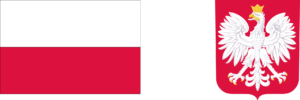When the European group phase of qualifying for the 2026 FIFA World Cup wrapped up on 17 November 2025, the picture for Central and Eastern Europe (CEE) was strikingly clear: only one team from the region has already booked its ticket to Canada, Mexico and the United States – Croatia.
Everyone else from the region will either have to fight through the March 2026 play-offs or watch the tournament from home.
At the same time, across Europe as a whole, seven nations have secured direct qualification as group winners so far: Croatia, England, France, Germany, Netherlands, Norway and Portugal.
1. The format: a brutal filter for the region
UEFA’s revamped qualifying format for the expanded 48-team World Cup gave Europe 16 places instead of 13, but it did not make life much easier. Twelve groups (A–L) were created;
- 12 group winners qualify directly for the World Cup.
- 12 group runners-up move into the play-offs.
- They are joined by four Nations League group winners who did not finish in the top two of their qualifying group, making 16 teams in the play-offs, with four more World Cup spots up for grabs.
For Central and Eastern Europe, this has produced a familiar pattern: plenty of teams “good enough for second”, very few able to dominate a group.
2. Croatia: the region’s only direct qualifier
The standout success story is Croatia.
- Group: L
- Final table (top CEE teams):
- 1st – Croatia – 22 points
- 2nd – Czechia – 16 points
- Outcome: Croatia qualify directly as group winners; Czechia head to the play-offs as runners-up.
Croatia controlled Group L with the calm of a team used to high-pressure campaigns. The defending World Cup bronze medallists combined familiar veterans with a younger generation, doing just enough in tight away matches and ruthlessly winning at home. Crucially, they avoided slip-ups against Montenegro and the Faroe Islands, which allowed them to seal first place before the final whistle of Matchday 10.
For the region, Croatia’s success is symbolically important: it shows that a mid-sized CEE country can still top a group outright, not only survive via playoffs.
3. The play-off army: CEE teams queuing at the door
While only one CEE team is already “in”, a large bloc is heading to the March 2026 play-offs. UEFA’s own state-of-play list confirms that several Central and Eastern European sides are either already in the play-offs or guaranteed at least a play-off route.
3.1 Runners-up safely in the play-offs
The following CEE or broadly Eastern European teams have already secured the play-offs as group runners-up:
- Albania – runners-up in Group K behind England
- Czechia – runners-up in Group L behind Croatia
- Poland – runners-up in Group G behind Netherlands
- Slovakia – runners-up in Group A behind Germany
- Ukraine – runners-up in Group D behind France
All of them fit the same pattern:
- They were competitive enough to finish ahead of mid-tier European rivals.
- But each ran into a heavyweight (Germany, France, Netherlands, England) or a highly consistent regional rival (Croatia) and could not quite overtake them over ten matchdays.
Poland are a good example. In Group G they never threatened the Dutch at the top, but also never truly looked in danger of losing second place. The 4–0 Dutch win over Lithuania on the final matchday underlined the gap at the summit – and locked Poland into the play-off route.
Slovakia, in turn, finished behind Germany in Group A. A heavy 6–0 German win over Slovakia on Matchday 10 confirmed Germany as group winners while pushing Slovakia into the play-offs – a reminder of the gulf in squad depth between traditional giants and ambitious CEE sides.
3.2 Nations League lifelines
The UEFA Nations League has thrown an extra lifeline to some CEE countries who under-performed in their qualifying groups but impressed in the Nations League cycle. Among those confirmed in the play-offs via the Nations League route are:
- Romania – cannot reach the top two in Group H, but their Nations League results guarantee a play-off spot.
- North Macedonia – either they or Wales will take one Nations League play-off place, depending on who finishes third in Group J; North Macedonia are at least assured of some play-off path.
- Northern Ireland and Sweden also benefit from this mechanism, though they are not usually classified as Central/Eastern Europe.
In Group H, Romania’s situation illustrates how complex the system has become: they are third behind Austria and Bosnia and Herzegovina, but still heading to the play-offs thanks to the Nations League rankings.
3.3 “At least play-off” status
A few other teams from the broader region are assured of at least a play-off place, but still had some chance (as of 17 November) to win their group outright:
- Austria – confirmed top-two in Group H and fighting Bosnia and Herzegovina for first place.
- Bosnia and Herzegovina – also confirmed top-two in Group H, guaranteed at least a play-off.
- Kosovo – in Group B, cannot finish lower than second, so they will either qualify directly with a huge win over Switzerland or land in the play-offs.
These cases underline that Central and Eastern Europe will likely be very heavily represented in the March 2026 play-offs, even if they are under-represented among the early directly qualified teams.
4. The casualties: who fell short?
For several CEE sides, the campaign has already effectively ended in disappointment. Based on the current standings and UEFA’s own summary, the following Central/Eastern European teams cannot qualify for the 2026 World Cup any more:
- Hungary – 3rd in Group F, behind Portugal and Republic of Ireland
- Serbia – 3rd in Group K
- Slovenia – out of the top two race in Group B
- Bulgaria – bottom of Group E
- Georgia – out of contention in Group E
- Armenia, Azerbaijan, Estonia, Moldova, Kazakhstan, Montenegro, as well as Belarus, Cyprus, and others not mentioned in the Nations League play-off list
The common theme is a lack of consistency. Many of these teams were capable of strong individual performances – a big home win here, a surprise away draw there – but dropped points in matches they were expected to win. In a short 4- or 5-team group, that is usually fatal.
5. Already-qualified European teams – and where CEE stands
As of the end of 17 November 2025, the list of European teams that have already qualified for the 2026 World Cup as group winners is:
| Team | Region (roughly) | Route |
|---|---|---|
| Croatia | Central/Eastern Europe | Group L winners |
| England | Western Europe | Group K winners |
| France | Western Europe | Group D winners |
| Germany | Western/Central Europe | Group A winners |
| Netherlands | Western Europe | Group G winners |
| Norway | Northern Europe | Group I winners |
| Portugal | Western Europe | Group F winners |
From a Central and Eastern European perspective, that table is sobering:
- Only Croatia represents the region among the early qualifiers.
- A large cluster (Poland, Czechia, Slovakia, Albania, Ukraine, Romania, North Macedonia, Bosnia and Herzegovina, Kosovo, Austria and others) are stuck in the grey zone of play-off uncertainty.
- A significant group – Hungary, Serbia, Bulgaria, Slovenia and more – are already out.
The March 2026 play-offs will therefore be decisive for the region’s final representation in North America. With four additional European places available via the play-offs, Central and Eastern Europe could still send a sizeable contingent to the World Cup – but for now, Croatia stand alone as the region’s only confirmed World Cup participant.
Quick status snapshot – key CEE teams
To round things off, here’s a concise CEE-focused status list (as of 17–18 November 2025):
- Already qualified directly:
- Croatia (Group L winners)
- In the play-offs as confirmed group runners-up:
- Albania (Group K)
- Czechia (Group L)
- Poland (Group G)
- Slovakia (Group A)
- Ukraine (Group D)
- In the play-offs via Nations League:
- Romania
- North Macedonia (or Wales; at least one of them)
- Assured of at least a play-off spot:
- Austria
- Bosnia and Herzegovina
- Kosovo
- Eliminated (cannot qualify):
- Hungary, Serbia, Slovenia, Bulgaria, Georgia, Armenia, Azerbaijan, Estonia, Moldova, Kazakhstan, Montenegro and others outside both the top-two and Nations League routes.






